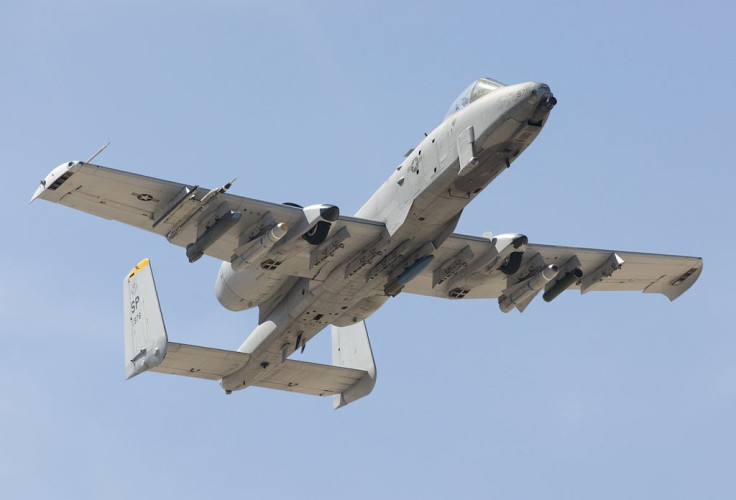The A-10 Thunderbolt, Saved By Congress, Joins Airstrikes Against ISIS In Syria

As the U.S. begins bombing ISIS targets in Syria with a campaign of airstrikes that started Monday, a venerable airplane that was almost sent to the scrapyard joins the fight. The Pentagon will send a dozen A-10 Thunderbolt aircraft and up to 300 airmen to the Middle East in early October, to help in the conflict against the Islamic State group, the Indiana National Guard said.
The deployment of the 40-year-old aircraft comes just four months after it was controversially saved from defense cuts by Congress, whose rationale for saving it was simple: Cutting it would lead to the deaths of U.S. servicemen on the ground. Built originally by now-defunct Fairchild to destroy Soviet tanks in Europe, the A-10 survived the end of the Cold War thanks to its ability to fly low, carry lots of bombs and a large cannon, and help troops with close air support, which made it often invaluable in Afghanistan. But with defense cuts looming and the Afghan war winding down, the Thunderbolt seemed on the way out.
The aircraft, while favored by some Air Force top brass, was slated to be cut from the defense budget in early May, with potential savings of about $4 billion over a five-year period. The more than 300 A-10s in service would have been grounded.
In May, Air Force Col. Robert S. Spalding III contended that an aircraft such as the A-10 had no place in the future of the Air Force and that those fighting to save it were “missing the point.”
“The U.S. Air Force is the best in the world at close air support in a permissive environment like Afghanistan, even without the A-10,” Spalding, now a military fellow at the Council on Foreign Relations, had told the International Business Times. “In the future, elite U.S. forces can do without it as the military continues to chase terrorists across the Middle East and Africa, and the A-10 has even less purpose in any future high-end combat in more contested areas, like China, with rapidly improving air defenses.”
But the A-10 had powerful friends. A campaign spearheaded by Republican Sen. John McCain, sought to save it, claiming that the aircraft was the only U.S. jet to offer tactical and accurate support close to the ground. Other aircraft, they argued, flew too fast and too high and were not as accurate in taking out the enemy in close confines.
After a vote in the House, the program was kept operational until 2015 with the help of a $635 million budget increase taken from the war fund, which is more or less a contingency fund that enables Congress to continue to keep whatever operational defense items it'd rather not cut.
It now appears that the decision to keep the plane has been vindicated. The threat faced by U.S. forces conducting bombing raids over Syria is that the enemy, ISIS, is more flexible and spread out compared to a traditional army, something that the U.S. saw in Afghanistan as it fought al Qaeda and the Taliban. The low-flying A-10 offers more flexibility and far more accuracy than fighter jets or bombers. When offering combat air support (not to U.S. troops, which President Obama has ruled out sending to fight ISIS, but to moderate Syrian rebels) it flies close to the ground at a top speed of 439 mph (706 km/h) and can loiter for long periods over an area. Crucially, its use may also result in fewer civilian casualties than less accurate alternatives.
© Copyright IBTimes 2025. All rights reserved.






















